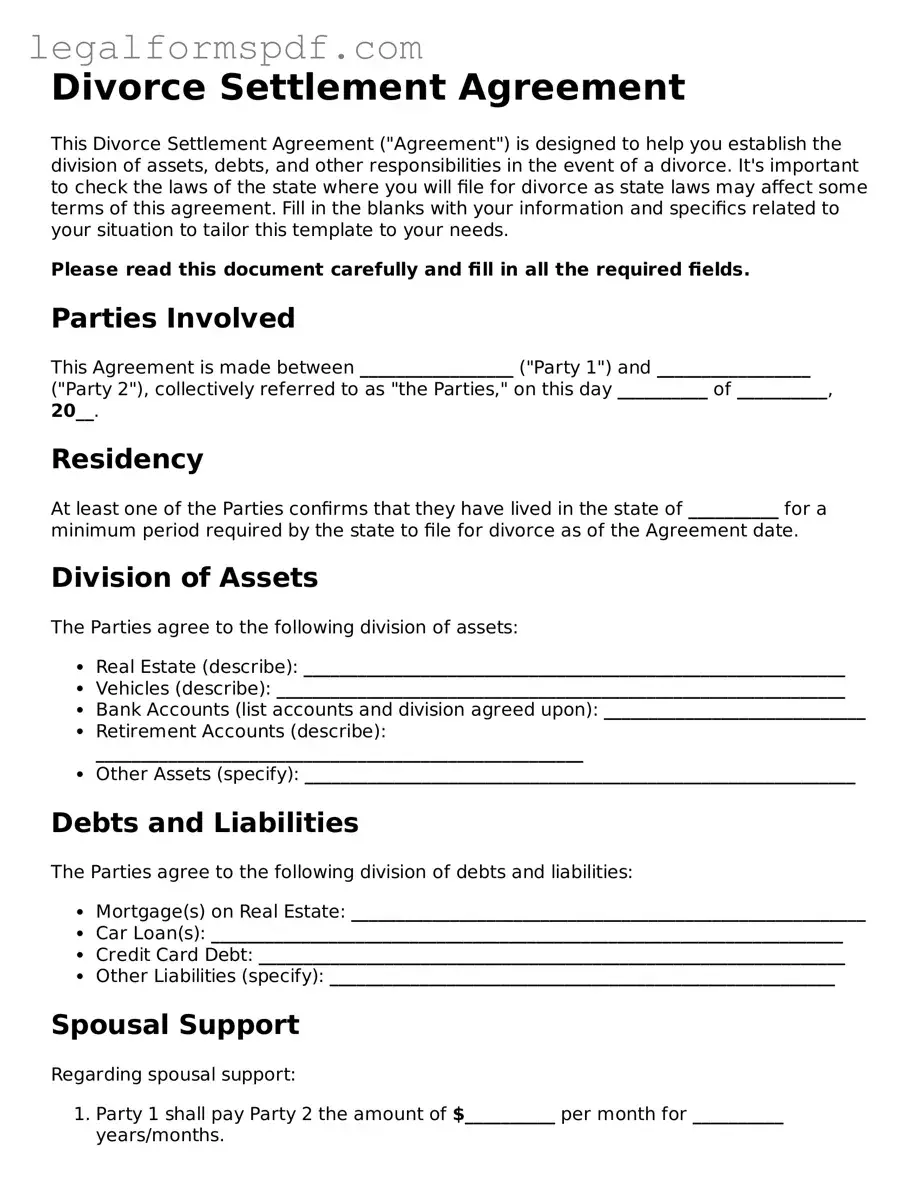Divorce Settlement Agreement
This Divorce Settlement Agreement ("Agreement") is designed to help you establish the division of assets, debts, and other responsibilities in the event of a divorce. It's important to check the laws of the state where you will file for divorce as state laws may affect some terms of this agreement. Fill in the blanks with your information and specifics related to your situation to tailor this template to your needs.
Please read this document carefully and fill in all the required fields.
Parties Involved
This Agreement is made between _________________ ("Party 1") and _________________ ("Party 2"), collectively referred to as "the Parties," on this day __________ of __________, 20__.
Residency
At least one of the Parties confirms that they have lived in the state of __________ for a minimum period required by the state to file for divorce as of the Agreement date.
Division of Assets
The Parties agree to the following division of assets:
- Real Estate (describe): ____________________________________________________________
- Vehicles (describe): _______________________________________________________________
- Bank Accounts (list accounts and division agreed upon): _____________________________
- Retirement Accounts (describe): ______________________________________________________
- Other Assets (specify): _____________________________________________________________
Debts and Liabilities
The Parties agree to the following division of debts and liabilities:
- Mortgage(s) on Real Estate: _________________________________________________________
- Car Loan(s): ______________________________________________________________________
- Credit Card Debt: _________________________________________________________________
- Other Liabilities (specify): ________________________________________________________
Spousal Support
Regarding spousal support:
- Party 1 shall pay Party 2 the amount of $__________ per month for __________ years/months.
- Party 2 shall pay Party 1 the amount of $__________ per month for __________ years/months.
- No spousal support will be provided.
Child Support and Custody
For Parties with minor children, they have agreed upon the following terms regarding child support and custody:
- Custody arrangements: ______________________________________________________________
- Child support payments: _____________________________________________________________
- Visitation schedule: _______________________________________________________________
- Other (specify): ___________________________________________________________________
Final Provisions
All the terms agreed upon in this Agreement shall be binding upon the Parties and replace any prior understandings, arrangements, or agreements, whether oral or written, between the Parties concerning the subject matter. This Agreement may only be amended in writing and signed by both Parties.
Each Party has entered into this Agreement freely and under no duress or undue influence. They acknowledge having read and understood all the terms and conditions contained herein.
Signed:
Party 1: ____________________________________ Date: _______________
Party 2: ____________________________________ Date: _______________
